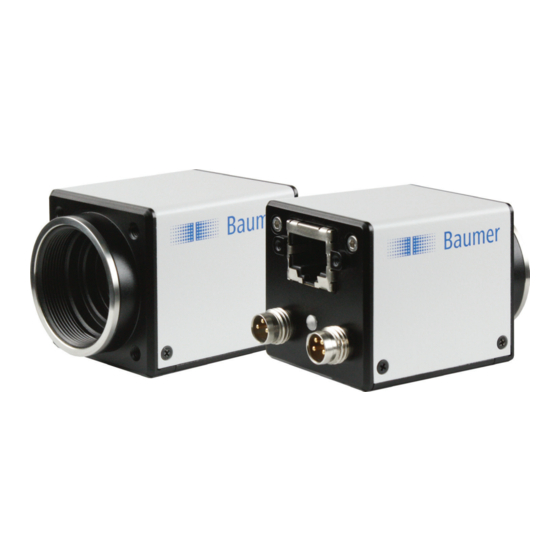Baumer EXG50 사용자 설명서 - 페이지 31
{카테고리_이름} Baumer EXG50에 대한 사용자 설명서을 온라인으로 검색하거나 PDF를 다운로드하세요. Baumer EXG50 42 페이지. Gigabit ethernet
Baumer EXG50에 대해서도 마찬가지입니다: 사용자 설명서 (42 페이지)

5.5 Packet Resend
Due to the fact, that the GigE Vision
datagram protocol - for data transfer, a mechanism for saving the "lost" data needs to be
employed.
Here, a resend request is initiated if one or more packets are damaged during transfer
and - due to an incorrect checksum - rejected afterwards.
On this topic one must distinguish between three cases:
5.5.1 Normal Case
In the case of unproblematic data transfer, all packets are transferred in their correct order
from the camera to the PC. The probability of this happening is more then 99%�
5.5.2 Fault 1: Lost Packet within Data Stream
If one or more packets are lost within the data stream, this is detected by the fact, that
packet number n is not followed by packet number (n+1). In this case the application
sends a resend request (A). Following this request, the camera sends the next packet and
then resends (B) the lost packet.
In our example packet no. 3 is lost. This fault is detected on packet no. 4, and the re-
send request triggered. Then the camera sends packet no. 5, followed by resending
packet no. 3.
5.5.3 Fault 2: Lost Packet at the End of the Data Stream
In case of a fault at the end of the data stream, the application will wait for incoming pack-
ets for a predefined time. When this time has elapsed, the resend request is triggered and
the "lost" packets will be resent.
standard stipulates using a UDP - a stateless user
®
◄ Figure 43
Data stream without
damaged or lost pack-
ets.
◄ Figure 44
Resending lost packets
within the data stream.
31
